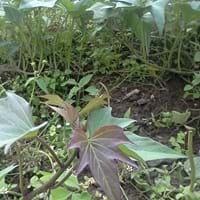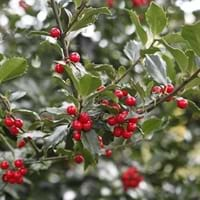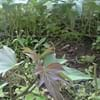Life Span
Annual and Perennial
Perennial
Type
Bulb or Corm or Tuber
Broadleaf Evergreen
Origin
Latin America and the Caribbean, Central America, Micronesia
Southwestern United States, Texas, Mexico, Central America
Types
Hannah Yams, Japanese Sweet Potatoes
Not Available
Number of Varieties
Not Available
Habitat
Cold Regions, Tropical regions
limestone outcrops, Open Plains
USDA Hardiness Zone
11-12
7-11
AHS Heat Zone
12-1
Not Available
Sunset Zone
21,22
Not Available
Habit
Vining/Climbing
Oval/Rounded
Minimum Width
Not Available
Flower Color
Not Available
White, Ivory
Flower Color Modifier
Bicolor
Not Available
Fruit Color
Not Available
Red, Orange
Leaf Color in Spring
Green, Purple, Light Green, Chartreuse, Bronze
Green, Blue Green, Olive
Leaf Color in Summer
Light Green
Green, Blue Green, Olive
Leaf Color in Fall
Several shades of Green
Green, Blue Green, Olive
Leaf Color in Winter
Light Green
Green, Blue Green, Olive
Leaf Shape
Heart-shaped
Elliptic and Ovate
Plant Season
Spring, Summer, Fall, Winter
Spring, Summer, Fall, Winter
Sunlight
Full Sun, Partial Sun
Full Sun, Partial Sun
Growth Rate
Very Fast
Slow
Type of Soil
Clay, Loam, Sand
Loam, Sand
The pH of Soil
Acidic, Neutral, Alkaline
Neutral, Alkaline
Soil Drainage
Well drained
Well drained
Bloom Time
Late Fall, Early Winter, Winter
Early Spring, Spring, Late Winter
Tolerances
Drought
Drought
Where to Plant?
Ground, Pot
Container, Ground
How to Plant?
Stem Cutting, Tuber propagation
Seedlings
Plant Maintenance
Medium
Medium
Watering Requirements
Average Water Needs, Needs a lot of water initially
Do not water frequently
In Summer
Lots of watering
Drought Tolerant, Average Water
In Spring
Moderate
Average Water
In Winter
Average Water
Average Water
Soil pH
Acidic, Neutral, Alkaline
Neutral, Alkaline
Soil Type
Clay, Loam, Sand
Loam, Sand
Soil Drainage Capacity
Well drained
Well drained
Sun Exposure
Full Sun, Partial Sun
Full Sun, Partial Sun
Pruning
Remove damaged leaves, Remove dead branches, Remove dead leaves
Remove dead or diseased plant parts
Fertilizers
All-Purpose Liquid Fertilizer
Not Available
Pests and Diseases
Aphids, Beetles, Leafminers, Red blotch
Not Available
Plant Tolerance
Drought
Drought
Flower Petal Number
Single
Single
Foliage Texture
Coarse
Medium
Foliage Sheen
Matte
Glossy
Attracts
Aphids, Beetles, Mites, white worms
Birds
Allergy
Abdominal pain, Skin rash, Swelling, Vomiting
Not Available
Aesthetic Uses
Not Used For Aesthetic Purpose
Not Used For Aesthetic Purpose
Beauty Benefits
Not Available
Not Available
Environmental Uses
Air purification
Food for birds, Shelter for wildlife
Medicinal Uses
Potassium, ß-carotene, Vitamin C
Astringent
Part of Plant Used
Leaves, Root, Shoots
Fruits, Wood
Other Uses
Used As Food, Used for its medicinal properties
Used for making wheel hubs, tool handles, Used for woodware
Used As Indoor Plant
Yes
No
Used As Outdoor Plant
Yes
Yes
Garden Design
Container, Edible, Groundcover, Hanging Basket, Herb / Vegetable, Mixed Border, Vine
Edible, Feature Plant
Botanical Name
IPOMOEA batatas
ARBUTUS xalapensis
Common Name
Sweet Potato, Sweet Potato Vine
Lady's Leg, Manzanita, Texas Madrone
In Hindi
शकरकंद
Texas Madrone
In German
Süßkartoffel
Texas Madrone
In French
Patate douce
Texas Madrone
In Spanish
Batata
Arbutus xalapensis
In Greek
Γλυκοπατάτα
Texas Madrone
In Portuguese
Batata doce
Texas Madrone
In Polish
Słodki ziemniak
Texas Madrone
In Latin
Dulcis SOLANUM TUBEROSUM
Texas Madrone
Phylum
Magnoliophyta
Tracheophyta
Class
Magnoliopsida
Magnoliopsida
Family
Convolvulaceae
Ericaceae
Clade
Angiosperms, Asterids, Eudicots
Angiosperms, Asterids, Eudicots
Tribe
Not Available
Not Available
Subfamily
Not Available
Not Available
Number of Species
Not Available
Properties of Sweet Potato and Texas Madrone
Wondering what are the properties of Sweet Potato and Texas Madrone? We provide you with everything About Sweet Potato and Texas Madrone. Sweet Potato doesn't have thorns and Texas Madrone doesn't have thorns. Also Sweet Potato does not have fragrant flowers. Sweet Potato has allergic reactions like Abdominal pain, Skin rash, Swelling and Vomiting and Texas Madrone has allergic reactions like Abdominal pain, Skin rash, Swelling and Vomiting. Compare all the properties and characteristics of these two plants. Find out which of these plant can be used as indoor plant. If you are interested to decorate your house and garden, find out aesthetic uses, compare them and select the plant which will beautify your surrounding. Along with beautification, try comparing medicinal and edible uses of Sweet Potato and Texas Madrone and you can choose the plant having best and most benefits.
Season and Care of Sweet Potato and Texas Madrone
Season and care of Sweet Potato and Texas Madrone is important to know. While considering everything about Sweet Potato and Texas Madrone Care, growing season is an essential factor. Sweet Potato season is Spring, Summer, Fall and Winter and Texas Madrone season is Spring, Summer, Fall and Winter. The type of soil for Sweet Potato is Clay, Loam, Sand and for Texas Madrone is Loam, Sand while the PH of soil for Sweet Potato is Acidic, Neutral, Alkaline and for Texas Madrone is Neutral, Alkaline.
Sweet Potato and Texas Madrone Physical Information
Sweet Potato and Texas Madrone physical information is very important for comparison. Sweet Potato height is 60.00 cm and width Not Available whereas Texas Madrone height is 640.00 cm and width 795.00 cm. The color specification of Sweet Potato and Texas Madrone are as follows:
Sweet Potato flower color: Not Available
Sweet Potato leaf color: Green, Purple, Light Green, Chartreuse and Bronze
Texas Madrone flower color: White and Ivory
- Texas Madrone leaf color: Green, Blue Green and Olive
Care of Sweet Potato and Texas Madrone
Care of Sweet Potato and Texas Madrone include pruning, fertilizers, watering etc. Sweet Potato pruning is done Remove damaged leaves, Remove dead branches and Remove dead leaves and Texas Madrone pruning is done Remove dead or diseased plant parts. In summer Sweet Potato needs Lots of watering and in winter, it needs Average Water. Whereas, in summer Texas Madrone needs Drought Tolerant, Average Water and in winter, it needs Average Water.





